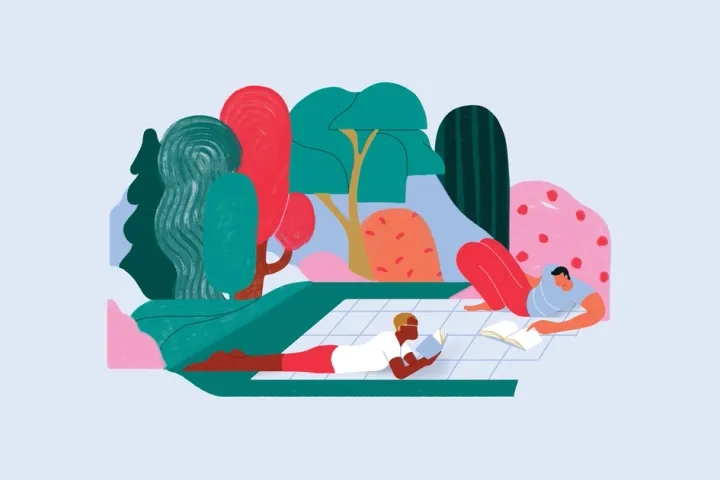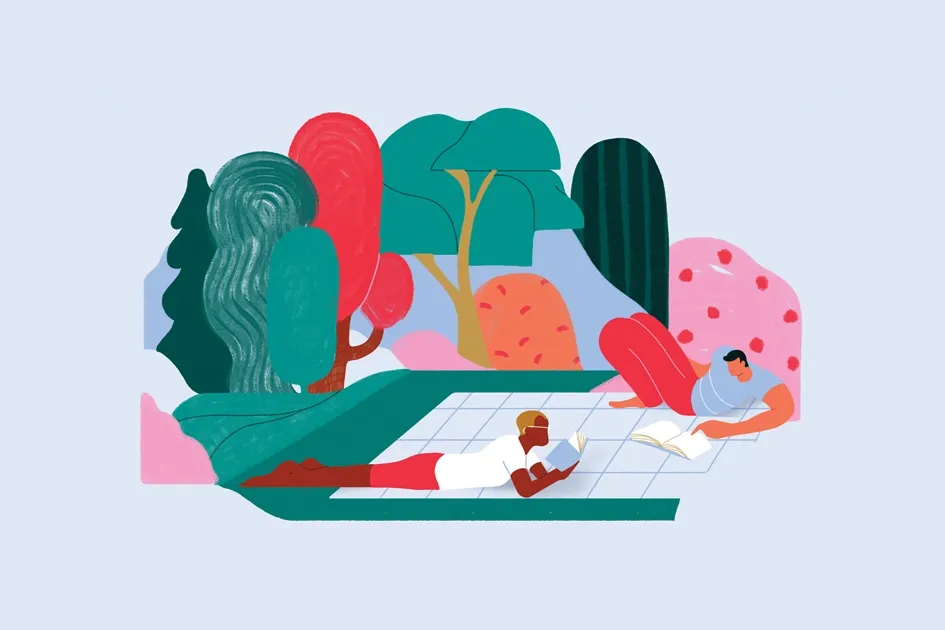I am a marginal gardener, and by this you might think I mean that my contribution to the world’s food production is negligible. That may be true. But actually, I mean “marginal” quite literally: I grow food in the margins of my yard.

In the loamy dirt along our privacy fence or next to the house—areas where others might plant shrubs or hostas—I grow tomatoes, kale, lettuce, and herbs. I share the space with other creatures, too. Wild rabbits, North American red squirrels, cardinals, honey bees, squash vine borers, ruby-throated hummingbirds, tomato hornworms, and others serve variously as co-laborers, observers, and nemeses.
This is not my mother’s garden. Growing up, we had a large plot of land tilled and fertilized for rows of corn, green beans, carrots, tomatoes, peppers, zucchini, squash, okra, and more. But in the urban and suburban homes I’ve lived in as an adult, large blocks of tillable land were a luxury I couldn’t afford. Instead, I’ve gardened in whatever space I could find.

As it turns out, God also had a plan for food grown along the edges. In ancient Israel, farmers were instructed to leave the grain or fruit grown in the outside rows of the field as a kind of tithe or stewardship, not to the temple but to the community. “Now when you reap the harvest of your land, you shall not reap to the very corners of your field, nor shall you gather the gleanings of your harvest,” God instructed through Moses. “Nor shall you glean your vineyard, nor shall you gather the fallen fruit of your vineyard; you shall leave them for the needy and for the stranger” (Leviticus 19:9-10). In other words, leave the margins for the marginalized.
Of course, doing so also served as a stewardship to the land and to other creatures. The uncut stems and fallen grain provided habitat and nourishment to both as the margins of the fields bumped against the margins of the wild. But mostly, this law mandated a way for Israel to care for others without neglecting its own. In fact, this was the very law that provided the means of survival for Ruth and Naomi when they returned to Israel from Moab. (See Ruth 2.)

In one of his letters to the Corinthians, the apostle Paul advocates a similar ethic for meeting the needs of others. After encouraging the church at Corinth to follow through with their commitment to financially support impoverished believers in Jerusalem, Paul says that he is not asking them to give to the point that they become poor and the receivers of the gift become rich. Instead, he’s asking them to give from the edges, from their surplus: “At this present time your abundance being a supply for their need, so that their abundance also may become a supply for your need, that there may be equality” (2 Corinthians 8:14).
Last December, my Sunday school class adopted a family for Christmas. We didn’t expect one member of our class to give up her own family’s Christmas gifts to help this family in need. Instead, we all dipped into the extra of our holiday budgets and purchased gifts for the whole family. Our plenty supplied their need. The class has done the same thing for funeral dinners and service projects. By giving of our extra time, money, and resources, we meet the need while sharing the burden.
Of course, Paul also commends sacrificial giving, acknowledging that the Macedonians’ “deep poverty overflowed in the wealth of their liberality” and “according to their ability, and beyond their ability, they gave of their own accord” (2 Corinthians 8:2-3). There are times when the needs of others are so great that we do have to move beyond the margins to give. Recently, a devastating illness left a friend’s husband unable to care for his family or himself. While many people have pitched in, my friend’s parents dropped everything to help. Their contributions in every area of life have proven to be sacrificial.
I think also of the Good Samaritan, whose care for the man lying on the side of the road felt extreme—extravagant, really. Yet the next day, like the others who didn’t stop, even the Samaritan had to continue on his way, bound by the demands of time and obligation. Presumably he was heading somewhere on business, walking along a road from Jerusalem to Jericho. Without minimizing the sacrifice of his actions, maybe there is another lesson here. Perhaps it was out of the margin of his time and resources—an extra day for travel or living below his means in order to have more to give—that he was free to stop and help (Luke 10:25-37).

Here lies the simplicity—and the difficulty—of serving others from the edges of our lives: We have to know where the edges are.
This past summer, I planted two tomato plants next to the fence. After a wet spring and summer, both grew much larger than expected but were producing almost no fruit. At one point, I nearly pulled them up by the root. But then in the dry days of late summer, the fruit swelled and the vines grew heavy. And by the time the first frost arrived in early November, those two small plants had produced enough tomatoes to feed our family for weeks. It was a simple but profound lesson.
In my family, we’re learning that serving from the margins means we live below our means, avoid over-commitment, and hold onto our stuff with open hands. Partnering with others, we’re often surprised by how far our “extra” goes when added to the extra of the people around us. We give sacrificially at times, too. But generally, we serve by keeping our margins free so when needs arise, we can help meet them. And the real blessing of it all is that, time and again, we are awed by what God does with even the smallest of things.
Illustration by Adam Cruft





